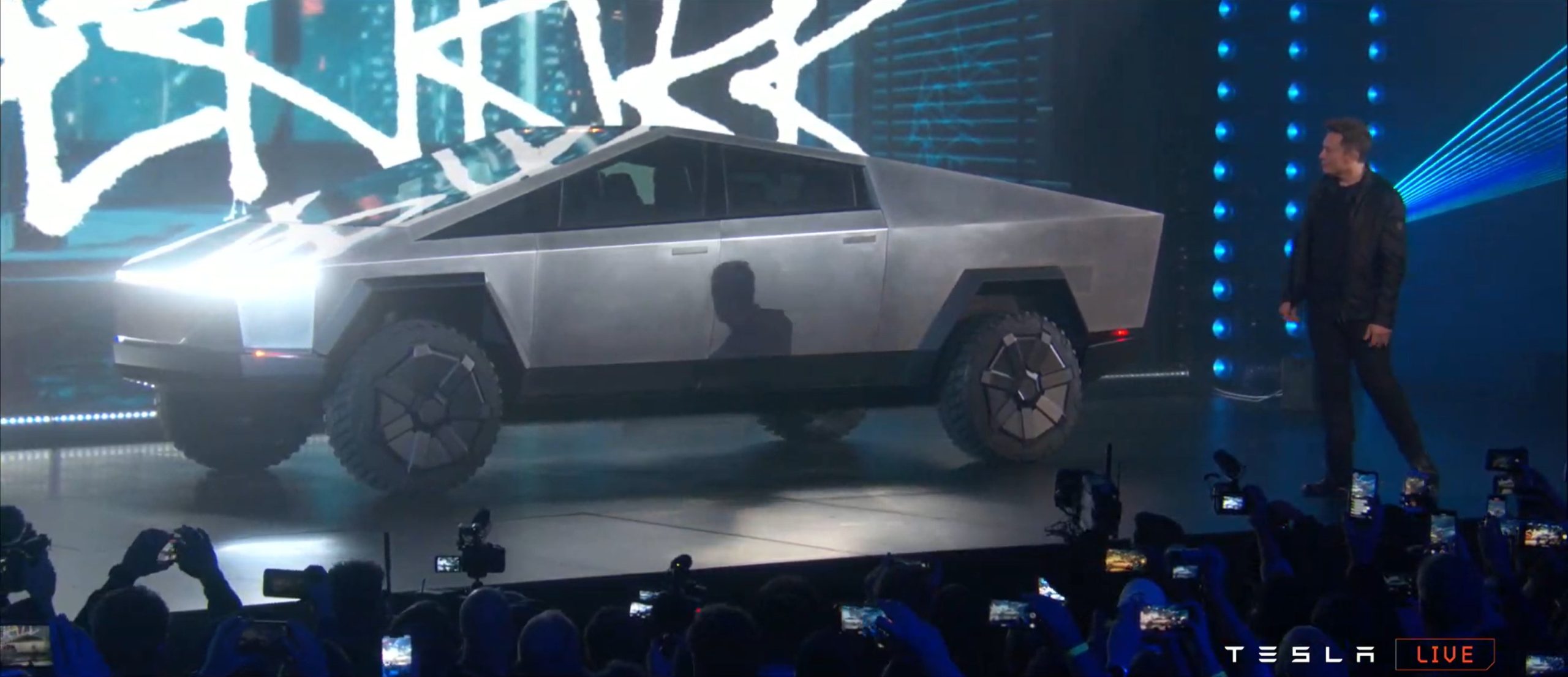
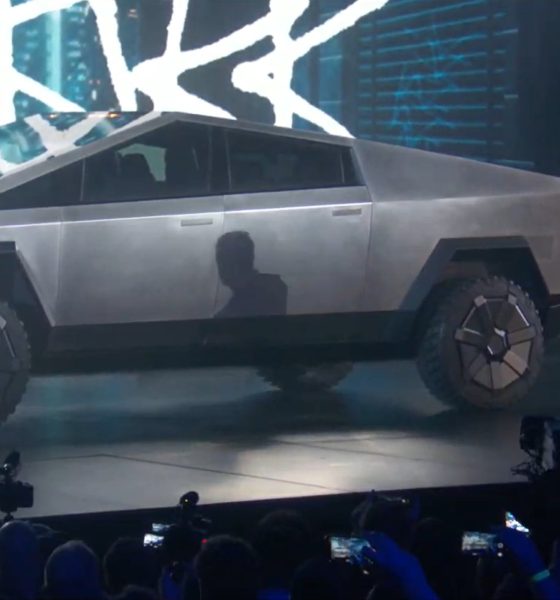
News
Tesla’s Cybertruck does not need traditional ‘truck people’s’ support to succeed
The Tesla Cybertruck is not a vehicle that could be appreciated by everyone. Uncompromisingly futuristic and angular to a fault, the vehicle looks less like a traditional pickup compared to other all-electric trucks like the Rivian R1T. Thanks to its polarizing looks, Tesla critics have predicted that the Cybertruck would be a flop, since the vehicle would not appeal to traditional “truck people,” who have preconceived notions about what a pickup should look like.
To be fair, the Cybertruck has received harsh criticism from a good number of classic pickup truck enthusiasts. Yet, despite this, the idea that the all-electric truck would fail because it would not appeal to a “typical Ford F-150 buyer” will likely be proven wrong. In fact, if one were to look at the history of Tesla’s vehicles, particularly the Model 3, one would note that the electric car maker’s cars do not really need the support of an existing demographic to be a success.
Tesla made a rather strange decision when it decided to start the Model 3’s rollout on the United States. During that time, some of the company’s critics pointed to the alleged folly of this strategy, particularly as the US’ luxury sedan market was in a steep decline. Yet, when Tesla hit its stride with Model 3 production, this bearish thesis was proven wrong. American car buyers bought the electric sedan, ending 2018 as the best-selling luxury car on the market with over 145,000 units sold.
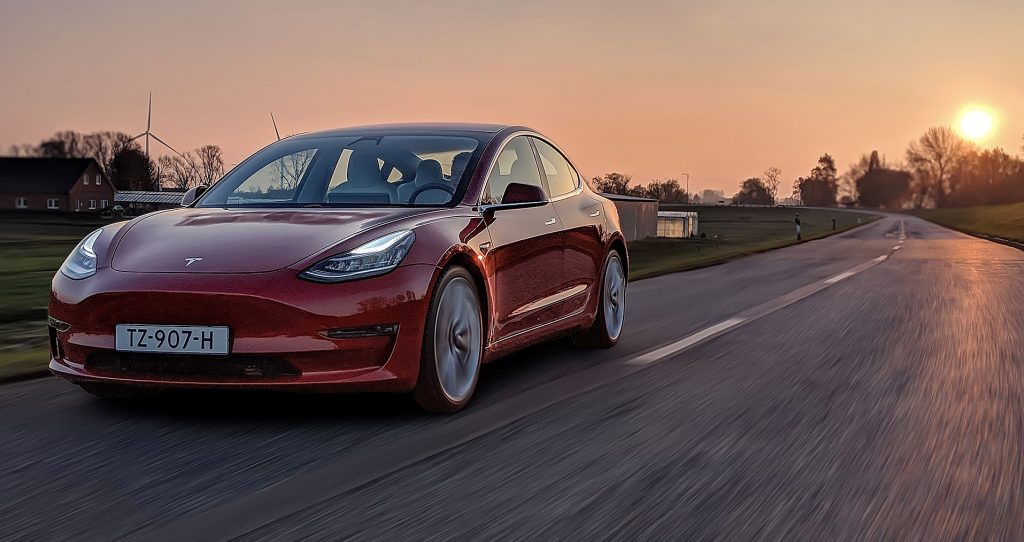
Tesla’s later discussions on Model 3 trends featured interesting insights about the vehicle and why it continued to buck the trend by thriving despite the decline in the US’ sedan sales. As it turned out, the Model 3 did not just convert existing luxury car buyers when it was released — it actually inspired a new type of electric car buyer. What are these customers? They were people who have never considered buying a premium vehicle before.
This is why some of the top vehicles traded in for the Model 3 include more affordable vehicles like the Toyota Prius and the Honda Accord. By offering the best tech and safety at a price point that’s justified by a significantly lower total cost of ownership, Tesla ended up encouraging customers to acquire the Model 3, even if they have to make a stretch to do so. By doing this, the Model 3 was essentially able to create a market for itself. The same could happen to the Cybertruck.
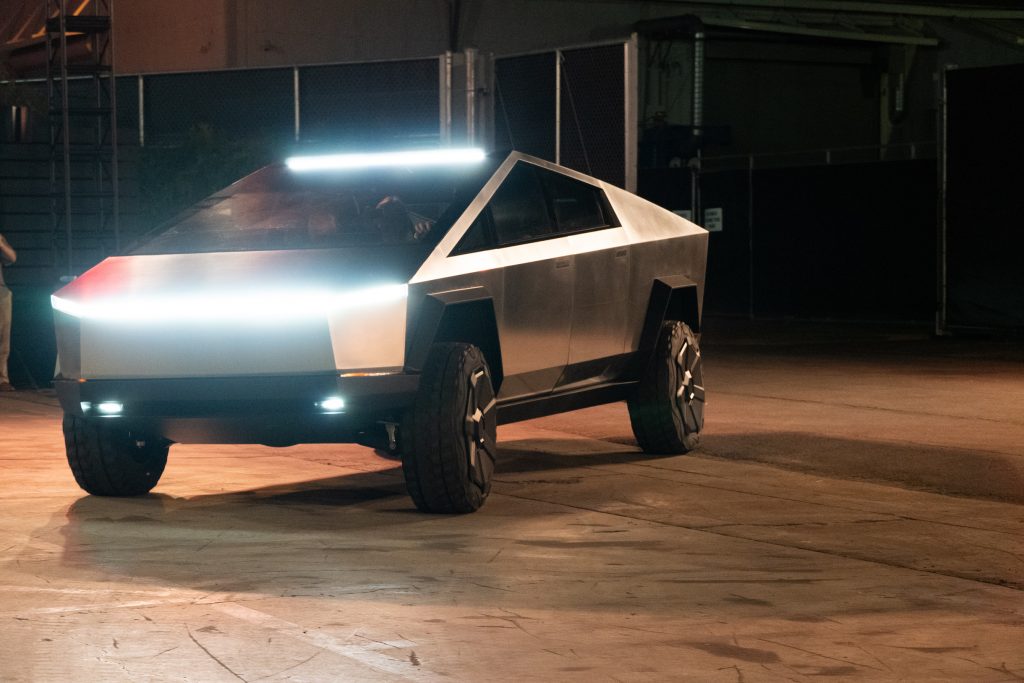
Thus, while it is true that the Cybertruck may never convert die-hard “truck people” who are loyal to veteran brands, the vehicle may also easily attract buyers who were previously not in the market for a pickup truck at all. This is already hinted at by some reservation holders who have shared their insights online, with some admitting that they are not “truck people” at all, but they are attracted to the Cybertruck’s cost and features nonetheless. Starting at $39,990, the Cybertruck is only a bit more expensive than the Standard Range Plus Model 3, which is a sedan.
The Tesla Cybertruck is still more expensive than entry-level pickups on the market, but it is priced very competitively against full-sized, double-cab pickups from rival carmakers. The vehicle is also loaded to the teeth with standard features that would otherwise require an aftermarket modification, such as its motorized tonneau cover. Couple this with a lower cost of ownership compared to massive fuel and maintenance costs incurred by conventional gas-guzzlers like the Ford F-150 and the Cybertruck becomes a very attractive vehicle, pickup veterans and otherwise.
H/T u/Dandan0005/Reddit

News
Man credits Grok AI with saving his life after ER missed near-ruptured appendix
The AI flagged some of the man’s symptoms and urged him to return to the ER immediately and demand a CT scan.

A 49-year-old man has stated that xAI’s Grok ended up saving his life when the large language model identified a near-ruptured appendix that his first ER visit dismissed as acid reflux.
After being sent home from the ER, the man asked Grok to analyze his symptoms. The AI flagged some of the man’s symptoms and urged him to return immediately and demand a CT scan. The scan confirmed that something far worse than acid reflux was indeed going on.
Grok spotted what a doctor missed
In a post on Reddit, u/Tykjen noted that for 24 hours straight, he had a constant “razor-blade-level” abdominal pain that forced him into a fetal position. He had no fever or visible signs. He went to the ER, where a doctor pressed his soft belly, prescribed acid blockers, and sent him home.
The acid blockers didn’t work, and the man’s pain remained intense. He then decided to open a year-long chat he had with Grok and listed every detail that he was experiencing. The AI responded quickly. “Grok immediately flagged perforated ulcer or atypical appendicitis, told me the exact red-flag pattern I was describing, and basically said “go back right now and ask for a CT,” the man wrote in his post.
He copied Grok’s reasoning, returned to the ER, and insisted on the scan. The CT scan ultimately showed an inflamed appendix on the verge of rupture. Six hours later, the appendix was out. The man said the pain has completely vanished, and he woke up laughing under anesthesia. He was discharged the next day.
How a late-night conversation with Grok got me to demand the CT scan that saved my life from a ruptured appendix (December 2025)
byu/Tykjen ingrok
AI doctors could very well be welcomed
In the replies to his Reddit post, u/Tykjen further explained that he specifically avoided telling doctors that Grok, an AI, suggested he get a CT scan. “I did not tell them on the second visit that Grok recommended the CT scan. I had to lie. I told them my sister who’s a nurse told me to ask for the scan,” the man wrote.
One commenter noted that the use of AI in medicine will likely be welcomed, stating that “If AI could take doctors’ jobs one day, I will be happy. Doctors just don’t care anymore. It’s all a paycheck.” The Redditor replied with, “Sadly yes. That is what it felt like after the first visit. And the following night could have been my last.”
Elon Musk has been very optimistic about the potential of robots like Tesla Optimus in the medical field. Provided that they are able to achieve human-level articulation in their hands, and Tesla is able to bring down their cost through mass manufacturing, the era of AI-powered medical care could very well be closer than expected.
News
Tesla expands Model 3 lineup in Europe with most affordable variant yet
The Model 3 Standard still delivers more than 300 miles of range, potentially making it an attractive option for budget-conscious buyers.

Tesla has introduced a lower-priced Model 3 variant in Europe, expanding the lineup just two months after the vehicle’s U.S. debut. The Model 3 Standard still delivers more than 300 miles (480 km) of range, potentially making it an attractive option for budget-conscious buyers.
Tesla’s pricing strategy
The Model 3 Standard arrives as Tesla contends with declining registrations in several countries across Europe, where sales have not fully offset shifting consumer preferences. Many buyers have turned to options such as Volkswagen’s ID.3 and BYD’s Atto 3, both of which have benefited from aggressive pricing.
By removing select premium finishes and features, Tesla positioned the new Model 3 Standard as an “ultra-low cost of ownership” option of its all-electric sedan. Pricing comes in at €37,970 in Germany, NOK 330,056 in Norway, and SEK 449,990 in Sweden, depending on market. This places the Model 3 Standard well below the “premium” Model 3 trim, which starts at €45,970 in Germany.
Deliveries for the Standard model are expected to begin in the first quarter of 2026, giving Tesla an entry-level foothold in a segment that’s increasingly defined by sub-€40,000 offerings.
Tesla’s affordable vehicle push
The low-cost Model 3 follows October’s launch of a similarly positioned Model Y variant, signaling a broader shift in Tesla’s product strategy. While CEO Elon Musk has moved the company toward AI-driven initiatives such as robotaxis and humanoid robots, lower-priced vehicles remain necessary to support the company’s revenue in the near term.
Reports have indicated that Tesla previously abandoned plans for an all-new $25,000 EV, with the company opting to create cheaper versions of existing platforms instead. Analysts have flagged possible cannibalization of higher-margin models, but the move aims to counter an influx of aggressively priced entrants from China and Europe, many of which sell below $30,000. With the new Model 3 Standard, Tesla is reinforcing its volume strategy in Europe’s increasingly competitive EV landscape.
News
Tesla FSD (Supervised) stuns Germany’s biggest car magazine
FSD Supervised recognized construction zones, braked early for pedestrians, and yielded politely on narrow streets.
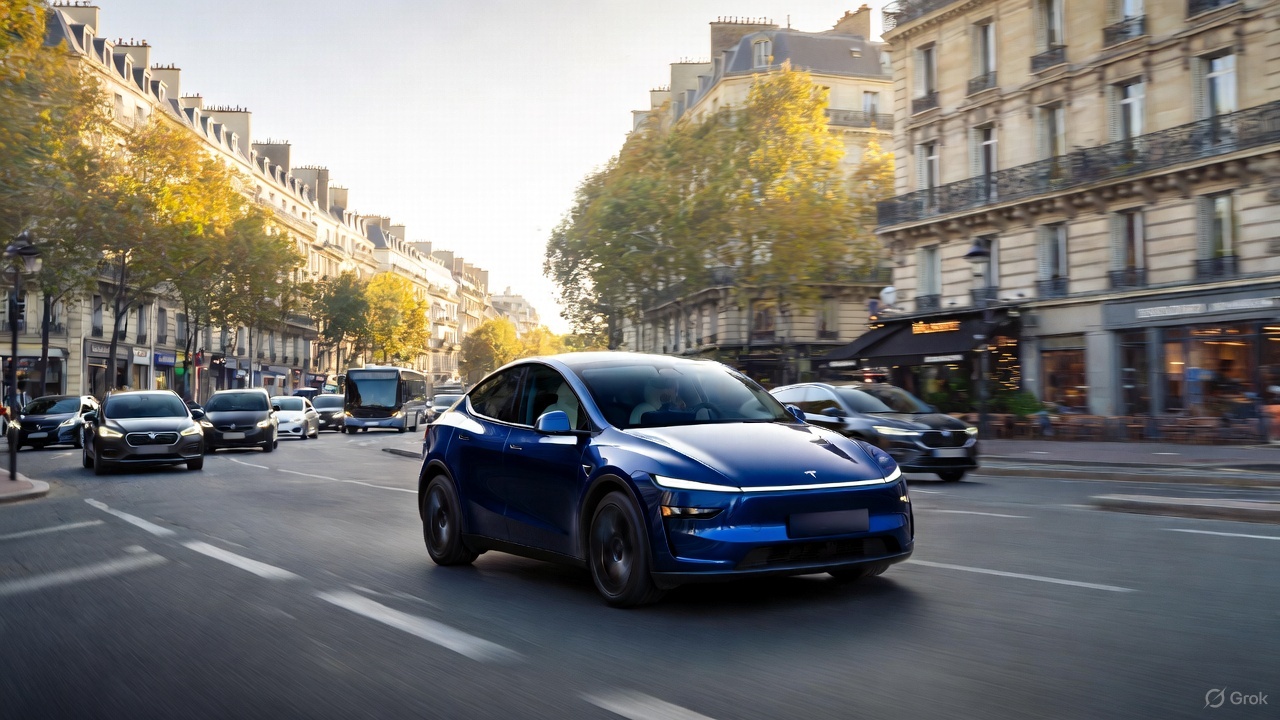
Tesla’s upcoming FSD Supervised system, set for a European debut pending regulatory approval, is showing notably refined behavior in real-world testing, including construction zones, pedestrian detection, and lane changes, as per a recent demonstration ride in Berlin.
While the system still required driver oversight, its smooth braking, steering, and decision-making illustrated how far Tesla’s driver-assistance technology has advanced ahead of a potential 2026 rollout.
FSD’s maturity in dense city driving
During the Berlin test ride with Auto Bild, Germany’s largest automotive publication, a Tesla Model 3 running FSD handled complex traffic with minimal intervention, autonomously managing braking, acceleration, steering, and overtaking up to 140 km/h. It recognized construction zones, braked early for pedestrians, and yielded politely on narrow streets.
Only one manual override was required when the system misread a converted one-way route, an example, Tesla stated, of the continuous learning baked into its vision-based architecture.
Robin Hornig of Auto Bild summed up his experience with FSD Supervised with a glowing review of the system. As per the reporter, FSD Supervised already exceeds humans with its all-around vision. “Tesla FSD Supervised sees more than I do. It doesn’t get distracted and never gets tired. I like to think I’m a good driver, but I can’t match this system’s all-around vision. It’s at its best when both work together: my experience and the Tesla’s constant attention,” the journalist wrote.
Tesla FSD in Europe
FSD Supervised is still a driver-assistance system rather than autonomous driving. Still, Auto Bild noted that Tesla’s 360-degree camera suite, constant monitoring, and high computing power mark a sizable leap from earlier iterations. Already active in the U.S., China, and several other regions, the system is currently navigating Europe’s approval pipeline. Tesla has applied for an exemption in the Netherlands, aiming to launch the feature through a free software update as early as February 2026.
What Tesla demonstrated in Berlin mirrors capabilities already common in China and the U.S., where rival automakers have rolled out hands-free or city-navigation systems. Europe, however, remains behind due to a stricter certification environment, though Tesla is currently hard at work pushing for FSD Supervised’s approval in several countries in the region.








